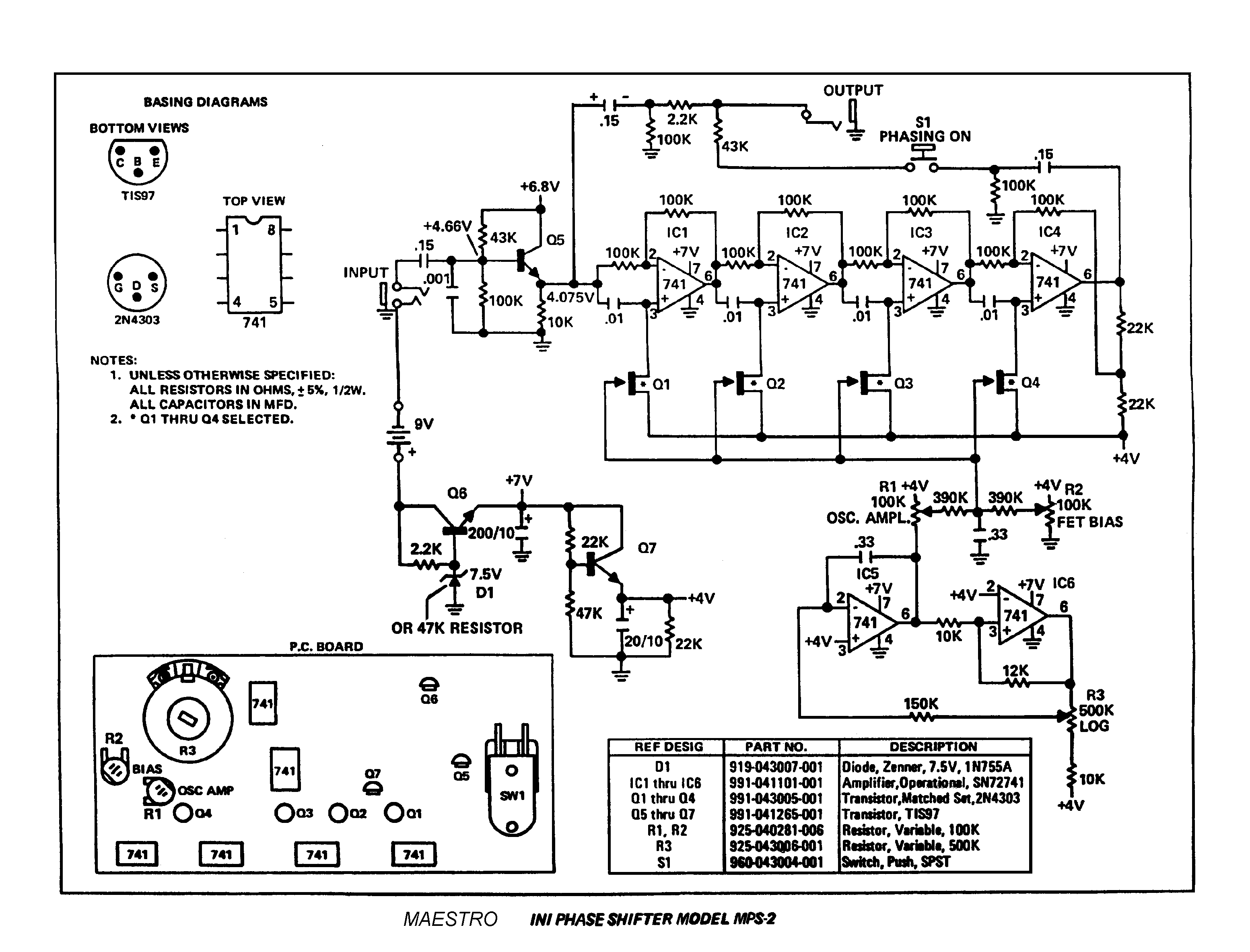Like to build one. All I can find online is 1 for $15.
Ad Widget
Collapse
Announcement
Collapse
No announcement yet.
Maestro MPS-2 Mini Phase
Collapse
X
-
I remember seeing *some* Maestro phase shifter a loooooooooooooong time ago.
It was basically a regular plain vanilla phaser (not much left to invent in that line) with only the clever idea of using the MosFets inside a CMOS chip (4049/4069?) instead of the regular Fets used by everybody else.
The idea behind that is that by coming all from the same chip, they did not need time-wasting matching; very good for a Factory, not *that* critical for an experimenter.
You might just build a "Classic" phaser, such as one of the MXR ones, the sound will be practically the same, you'll need to buy a few extra Fets and match them.
The unused ones will work perfectly in any other project.Juan Manuel Fahey
Comment
-
JM I have to say that the Maestro Phase Shifter PS-1 sounds FAR better than any MXR phaser I've played. That's why I'm interested in this Maestro pedal. MXR phasers tend to sound thin and lifeless to me. The Maestro sounds full and "liquidy."
Comment
-
This is it, right? Nothing particularly remarkable there. Same old utilitarian triangle LFO, same old 4 stages. Only really distinctive differences are the input buffer and the use of 2N4303 FETs without any sort of parallel resistor. Normally, you'd see a fixed resistor in parallel such that the sweep would be constrained by the maximum resistance set by the resistor/FET combination. Possibly, this unit has a wider sweep, but I'm just guessing. The op-amps used are the same crappy 741s used in the Script model P90. Nothing really to recommend them. Where you'd find 2N4303s these days is beyond me. I keep my eyes peeled for them, but never see any. have no idea what's special about them or if there are any contemporary substitutes. In general, these babies depend heavily on setting the bias properties carefully, and on having well-matched FETs. In phasers, the "turnaround" is crucial to them sound musical. When the FETs are not reasonably well-matched, you can have the case where several of them continue to change resistance as the LFO output changes, at the same time as others crap out. That's one of the things about LDR-based phasers; usually LDRs will continue to change resistance together. They don't have to be matched FOR resistance, but they have to keep changing resistance at the same time. I have no idea if there was anything special about the 4303s in that respect. These days, folks seem to like the (easy-to-find) 2N5952 (used in the Phase 90 and all clones), or the 2N5484

Comment
-
Yup, a plain vanilla phaser, like countless others.
Yet maybe Lowell found a particularly tasty one.
After all, even with matching there still is huge variation due to not-so-matched-after-all FETs.
I would try to buy/borrow(forever)/trade/you name it *that* particular unit.
Lowell, go for it.Juan Manuel Fahey
Comment
Comment